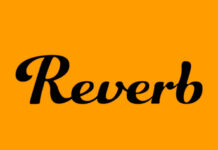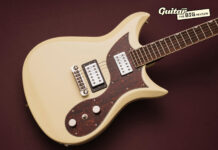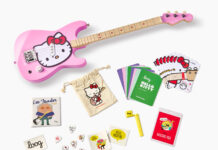
Chase Bliss Brothers AM review: “it could easily be the last drive pedal you ever buy”
$399/€469, chasebliss.eu
In the guitar world you tend to find that there are people who obsess over drive pedals, and those who don’t. For some, one TS-derived pedal sounds much like another, while others will care about every nuance of the EQ curve and devote a huge amount of time and energy into getting their gain sounds just so.
READ MORE: MXR Duke of Tone – believe the hype? The King has come to the people
Even if you’re in the former camp, however, you’ll have probably heard about the legendary Analog Man King Of Tone. The famous purple box is one of those holy grail circuits that played a huge part in making the boutique pedal scene what it is today.
It’s also one of the hardest to get hold of, because each pedal is made by hand to rigorous and hard-to-find components. To put how hard it is to get one in perspective, the folks who ordered their pedals before the pandemic are still waiting to receive them here in 2025.
But what happens when one of the most famously fastidious analogue purists around decides to work on a project with Chase Bliss – creators of some of the most sonically ambitious pedals on the planet? Well, you get the Chase Bliss Brothers AM.
Image: Adam Gasson
Chase Bliss Brothers AM – what is it?
Let’s get this out of the way first of all… despite that tell-tale colour scheme, this is not simply a Chase Bliss version of the King Of Tone without the two-year waiting list. The Analog Man himself Mike Piera has already done that with the MXR Duke Of Tone, and it’s a lot cheaper too.
It’s also not not a Chase Bliss version of the King Of Tone either, though. It’s complicated.
“There’s no way to truly replicate Mike’s process, everything is simply too personal and hand-crafted (and made with finite, vintage NOS components),” says Chase Bliss main man Joel Korte. “So we decided to focus on the aspects of the King Of Tone that we could expand and take further. Instead of labouring over a perfect recreation, we decided to make an expanded counterpart.”
What that means in practice is that you get a pedal that has the same basic layout as the original Chase Bliss Brothers pedal from 2018, but with insides designed from the ground up with Analog Man to offer more sounds, more functionality and more control than ever before.
That means you get the legendary overdrive and distortion sounds from the original King Of Tone, plus an all-new addition – a dual-mode treble boost inspired by Analog Man’s Beano Boost.
Image: Adam Gasson
Like the original Brothers, the AM functions as effectively two identical but separate pedals, each controlled by its own footswitch. Using the three-way toggle for each channel, you can decide which of the three sounds – distortion, overdrive or boost – you want each one to use.
There’s also a switch to determine the flavour of your boost – flipped one way, it gives you added brightness and high-end sparkle; flipped the other, it delivers a classic Rangemaster-style tone with a strong emphasis on the upper mids.
As if that wasn’t enough, you’ll also find the usual Chase Bliss bank of dip switches on the top of the pedal. For the AM, these give you the option to turn on the ‘hi-gain’ mode for each channel (adding about 25% to the gain of everything), allow you to use the footswitches in momentary mode for that quick boost of signal when you need it, and the option to link the presence control (which is selected via a secondary function on the pedal itself) to the overall tone control.
There are also four onboard presets, plus full MIDI control (with 128 presets), and expression pedal control over any of the parameters (again determined via the other bank of dip switches on top) – this is a Chase Bliss pedal after all.
Finally, if this pedal is a team-up worthy of the Avengers, then we also get an end-credits scene. Pop off the back cover and you’ll find, in classic Analog Man style, some internal trim pots to tweak the impedance, output and bias of the boost circuit.
And if you feel like you need to take a break after processing all that information, I don’t blame you – it’s a lot. But all that clever stuff won’t mean a lot if it doesn’t have that sound.
Image: Adam Gasson
Chase Bliss Brothers AM – in use
The thing that scares a lot of people off Chase Bliss pedals is the complexity that all those knobs, toggles and dip switches imply – but in my experience the genius of them is how easy and user-friendly they are in practice.
I think with the Brothers AM, there’s been even more of an emphasis on making this an intuitive experience. This is a drive pedal after all, and the patience/knowledge floor of those trying it out will be much lower than one of the brand’s usual glitchy, ambient, loopy designs.
In truth, if you never want to look at those dip switches, if you never want to contemplate a preset, or be in the same room as an expression pedal, you can still have an exciting, inspirational and fulfilling experience with the Brothers AM.
It helps that the Chase Bliss Field Notes-style manuals it ships with pedals are so very good – and here it really does walk you through everything you need to dial in your basic sounds in just a minute or two. Even if you’d never played something more involved than a Tube Screamer in the past, you’d be up and running in a heartbeat.
And in truth, even the deeper editing is pretty easy to understand once you’ve flicked through the short and picture-heavy user guide. Want more gain on one of your sounds? Just flip the hi-gain dip switch… there’s not much in the way of hidden functions, complex button press combos here – it’s all right there on the pedal.
Image: Adam Gasson
Chase Bliss Brothers AM – sounds
For those wondering out of the gate whether it sounds like a King Of Tone… let me just get that out of the way. It really does – it nails the vibe of the original and captures even more of the little nuances than the impressive MXR Duke Of Tone did.
Is it identical to the real thing? Your ears will have to be the judge, but it certainly did everything I wanted it to do in that regard – and more.
Oh yeah, the more – that’s is kinda why we’re here, isn’t it? So with my trusty Jazzmaster and my Matchless Laurel Canyon in hand, I figure the best place to start here is the new thing – the boost.
And instantly, I’m hugely impressed. When you need a bit of extra gusto for leads, the boost settings on both modes cut through like a chainsaw. Each one also has a distinct character you don’t fully appreciate until you set them to each respective footswitch and put them side by side.
On the one side, you get a sound that retains all the nuances of the original signal but adds just a touch more treble. The other is a bassier, darker boost that’s still loud and dynamic, but with more low-end coloration. Both sound great, it’s a case of choosing which one best interacts with the sound you’re using on the other side.
I have pretty specific expectations of how a dirt pedal responds to the dynamics of a Jazzmaster’s single-coil jangle, and the overdrive portion of the AM does not disappoint.
It perfectly nails that edge-of-breakup sound, pushing any clean tube amp to its limits. Especially with the treble booster engaged, it gives you a wonderful ‘Tube Screamer pushing beyond the edge of breakup’ sound. But with a few tweaks you can find a much darker and more brooding sound – it’s soulful, smokey and very distinctive.
Moving into the distortion and again the breadth of what’s on offer here is hugely compelling – you can get subtle, you can get chaotic, and you can get strident, full distortion sounds all at the twist of that gain knob.
And then when you switch the hi-gain mode it’s another level of nastiness altogether, pushing the Brothers AM into almost metal territory. But the real magic is how the two sides of this pedal work together. The push and pull between the hugely varied sounds on offer lets you sculpt almost any drive or distortion tone you could imagine, and then mercifully save it as a preset so you never have to worry about dialling it in just so again.
What’s almost more impressive is the consistency of the pedal – whether it was being run through single-coils or humbuckers, it still retains that King Of Tone DNA… but with a dynamic range that lets you dial things in perfectly every time.
Image: Adam Gasson
Chase Bliss Brothers AM – should I buy one?
There’s no escaping that 400 bucks is a whole lotta beans for a drive pedal – alongside the dip switches its the criticism you most often hear about Chase Bliss pedals. But then you look at the work, and the craft and the ingenuity that’s gone into it – this isn’t just some lazily rehashed clone circuit.
You also have to take it in some context. For starters, you really are getting two incredibly versatile and great sounding dirt pedals in one compact unit. It also costs half of what a King Of Tone will cost you on Reverb today if you don’t fancy waiting half a decade to own it.
But again, this isn’t a King Of Tone – it’s heavily inspired by it of course, but the Brothers AM is very much its own thing – think of it as the Dolby Atmos version of the original, if you like.
It’s also by some distance the easiest Chase Bliss pedal I’ve ever used – the sort of thing that makes you marvel at how cleverly and intuitively designed a very deep and very tweakable pedal can be in the right hands.
Above all though, it’s inspirational. As with anything that has Chase Bliss or Analog Man attached to it, the online hype around this pedal has been intense, but it more than lives up to it in my experience.
With my hand on my heart I can say it’s one of the most tonally gratifying pedals I’ve ever used. Yes, it’s not cheap – but it could easily be the last drive pedal you ever buy.
Chase Bliss Brothers AM – alternatives
The obvious elephant in the room here is of course the MXR Duke Of Tone ($149/£169.99) – the last collaboration that Mike Piera did with another effects brand. It’s effectively one-half of the KoT’s dual circuits, and punches well above its pricetag sound-wise.
There aren’t many actual King Of Tone imitators, but one such budget option is the Tone City King Of Blues ($79/£69.99) – it’s not gonna get you as close as even the Duke does to the real thing, but it’s a passable ballpark impression for under a hundred bucks. Another take on the dual overdrive format is the Browne Amplification Protein V4 ($349/£349) – like the KoT one half of the Protein is derived from a Marshall Bluesbreaker pedal, but the other half is different, being inspired by the Nobels ODR-1.
The post Chase Bliss Brothers AM review: “it could easily be the last drive pedal you ever buy” appeared first on Guitar.com | All Things Guitar.
Source: www.guitar-bass.net












